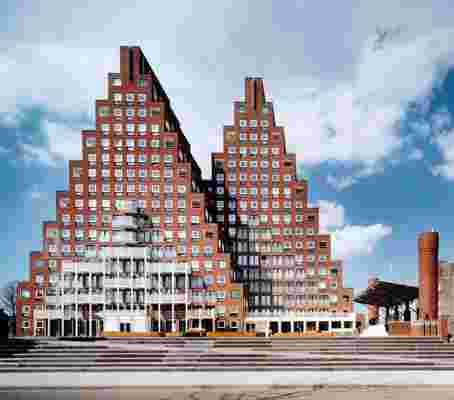Postmodern architecture arrived on the scene in the 1960s not with a whimper but with a bang. As a sharp, complex response to the Modernist style that supported the idea that simplicity was beautiful, Postmodernism instead ushered in a rush of bold, whimsical designs that were anything but minimalist. With striking colors, references to classical and Gothic styles, a variety of materials and shapes, and an air of playfulness, Postmodern structures are easily identifiable not only by their signature characteristics but also by the stringent forms they reject. The style is perhaps best summed up most famously by architect Robert Venturi , who responded to Mies van der Rohe positing that "Less is more" with "Less is a bore." Venturi is widely credited as being the founding father of Postmodernism, introducing his new vision with his early designs including the Vanna Venturi House and Guild House. The style—as captured in a new book out from Phaidon titled Postmodern Architecture: Less is a Bore —carries on today, as whimsical buildings with bold colors, ornaments, and different cultural references continue to pop up around the globe. Ahead, 15 examples of the style.
Amsterdam, the Netherlands

The Lake District, Cumbria, England

Brooklyn, New York

Villeurbanne, France
Tokyo, Japan
Bangkok, Thailand
Amsterdam, the Netherlands
Los Angeles, California
Örnsköldsvik, Sweden
Karlsruhe, Germany
Miami, Florida
Manningtree, Essex, England
Giova, Switzerland
Miami, Florida
Bermondsey, London, England
Postmodern Architecture: Less Is a Bore (Phaidon) is available now .
